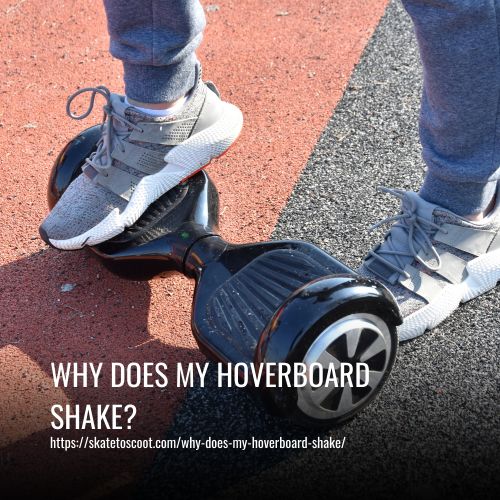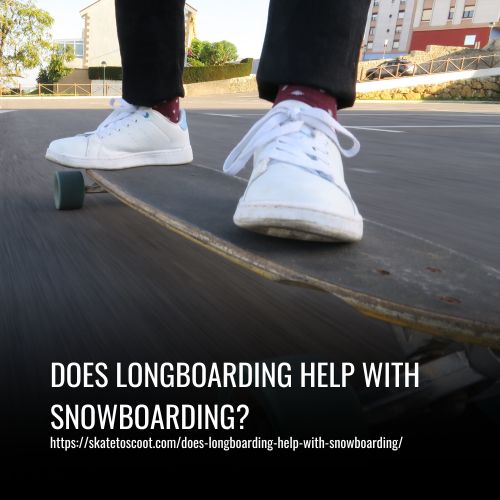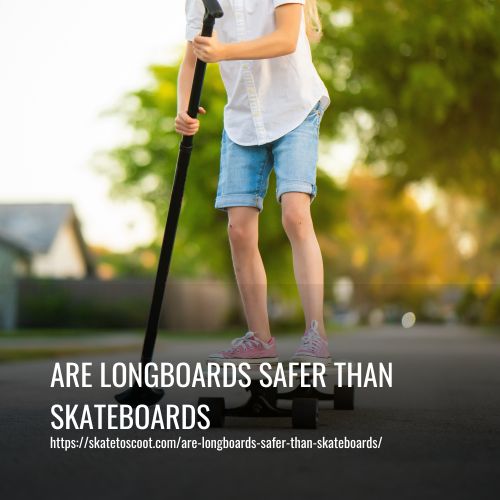As an Amazon Associate we earn from qualifying purchases.
There can be several reasons for your hoverboard to shake. One possible cause is a misalignment in the balance sensors or pressure sensors on the foot pads. This misalignment can occur due to normal wear and tear or rough usage.
Another reason could be an issue with the gyroscope, which helps maintain balance while riding. A faulty gyroscope can lead to shaking or wobbling. Additionally, if the hoverboard has not been calibrated properly, it can also cause vibrations.
It is important to ensure that the hoverboard is on a flat surface when calibrating. If the shaking persists, it is recommended to contact customer service for assistance or consult a professional technician who can diagnose and repair the issue.

What makes hoverboards shake?
Hoverboards, with their self-balancing technology and sleek design, are a popular mode of transportation for many people. However, one common issue that hoverboard owners may encounter is the shaking or wobbling of the device while riding. This can be both frustrating and potentially dangerous. So, why do hoverboards shake? Let’s delve into the main causes of this problem.
1. Improper Weight Distribution:
One possible reason for a shaking hoverboard is the improper distribution of weight on the footplates. If the rider does not put enough weight on the footplates or if they are not heavy enough, the board may struggle to maintain balance and stability, resulting in a shaky ride.
2. Technical Faults:
Another common cause of shaking hoverboards is technical faults within the device itself. Defects or malfunctions in the internal components, such as the sensor brackets, power buttons, or gyroscopes, can disrupt the proper functioning of the hoverboard and lead to shaking or wobbling.
3. External Factors:
External factors can also contribute to the shaking of a hoverboard. Objects stuck around the wheels, such as small stones or debris, can cause vibrations and noise while riding. Additionally, loose or missing screws on the hoverboard can affect the sensitivity of the footplate sensors, resulting in wobbling and instability.
4. Calibration Issues:
Calibration plays a crucial role in ensuring the smooth operation of a hoverboard. If the hoverboard has not been calibrated properly or if the calibration process was not completed correctly, it can lead to balance and stability issues, causing the device to shake during use.
How Heavy Should You Be To Ride A Hoverboard Without It Shaking?
When it comes to riding a hoverboard, weight distribution plays a significant role in ensuring a smooth and stable ride. If a rider is too light or fails to distribute their weight evenly on the footplates, it can disrupt the hoverboard’s balance and result in vibrations or shaking. In this article, we will discuss the importance of weight and how heavy a person should be to ride a hoverboard without experiencing shaking or instability.
1. Rider Is Underweight:
If your hoverboard is shaking while you ride it, one possible reason could be that you are underweight for the hoverboard. All hoverboards have a minimum weight requirement, and if the rider falls below this weight, issues such as shaking, vibrating, or turning on and off simultaneously may occur.
Explanation:
Hoverboards have sensors that detect the pressure and movement of the rider. The rider’s weight puts pressure on these sensors, which then send signals to the motherboard. The motherboard controls the wheels based on the pressure and movement detected.
However, when an underweight rider rides a hoverboard, they are unable to exert the minimum pressure required to trigger the motion. This leads to the hoverboard behaving differently and shaking or vibrating instead of moving smoothly.
Solution:
Unfortunately, underweight riders cannot use an adult-sized hoverboard. It is advisable for them to choose a smaller hoverboard that is more suitable for their age and weight category. It is recommended that underweight riders opt for a smaller and more suitable hoverboard according to their age and weight category.
If you are not underweight but still experiencing shaking, the issue might be something other than being underweight. In such cases, refer to the following reasons and try implementing the suggested solutions.
2. Riding A Hoverboard In The Wrong Way:
Some riders may find that their hoverboards shake or vibrate while in use. This can be a cause of concern for users and may lead them to question why this is happening.
Reason for Shaking:
One primary reason why a hoverboard may shake or vibrate is if the rider is not placing adequate pressure on the foot pads. Many beginners tend to stand in the middle of the footboard while riding, which can cause the pressure sensors to be unable to accurately detect their motion or body weight. As a result, the hoverboard may shake or vibrate as it tries to compensate for the lack of input from the sensors.
Solution:
The solution to this problem is relatively simple. To avoid shaking or vibration while riding a hoverboard, riders should place their feet on both edges of the footboard where the sensors are located. By doing this, the sensors can quickly and accurately detect the rider’s motion and respond accordingly.
If you are an experienced rider and are still experiencing shaking issues, there may be other factors at play. In such cases, it is recommended to contact the hoverboard manufacturer for assistance or refer to the user manual for troubleshooting tips.
3. Sensors Are Covered Or Not Working Properly:
One of the common reasons why a hoverboard may shake or vibrate is when the pressure sensors, which are placed under both edges of the footboard, are covered or not working properly. These pressure sensors are responsible for sensing the rider’s motion and surface conditions, and they send signals to the motherboard to act accordingly. When these sensors are obstructed or malfunctioning, they are unable to accurately interpret the rider’s movements, leading to the hoverboard shaking or vibrating unnaturally.
Solution:
- If you notice your hoverboard shaking or vibrating, it may be due to the pressure sensors being covered or not working properly. Here’s what you can do to address this issue:
- Check for Obstructions: Inspect the footboard of your hoverboard and make sure the pressure sensors are not covered or obstructed by any dirt, debris, or objects. If there is any buildup, gently clean the sensors with a soft towel or tissue to ensure they are free from any obstructions.
- Adjust Sensor Placement: Sometimes, the pressure sensors may become mispositioned during use. Carefully examine the sensors and see if they need to be realigned. Adjust them back to their original placement if they have shifted, ensuring that they are securely in place.
Reset the Hoverboard: If the above steps do not resolve the issue, you can try resetting the hoverboard. To do this, long-press the power button of the hoverboard for a few seconds until it powers off. Then, turn it back on and see if the shaking or vibrating has stopped. This reset can often recalibrate the sensors and resolve any underlying issues.
4. Internal Sensors Or Wire Malfunction:
Hoverboards are electronic devices that rely on various internal sensors and wires to provide a smooth and balanced riding experience. However, sometimes these sensors or wires can malfunction, leading to shaking or vibrations while riding the hoverboard.
This can be caused by factors such as overcharging, overheating, or overriding. When these malfunctions occur, certain components of the hoverboard may not function properly, resulting in a shaking or vibrating sensation.
Solution:
To address the issue of shaking or vibrating due to internal sensor or wire malfunction, it is necessary to carefully inspect the components connected to the motherboard. Begin by opening the hoverboard’s body and examining the wires and sensors closely. Look for any signs of a short circuit or misplacement. If any components are found to be faulty, they should be replaced. In the case of broken wires, they should be repaired or replaced as well. It is advisable to order new electronic components from the hoverboard’s brand to ensure compatibility.
Important Note: It is essential to have a good understanding of electronics and how a hoverboard works before attempting to repair or replace internal components. If you are a beginner without such knowledge, it is recommended to seek professional assistance rather than attempting to fix the issue on your own.
5. Faulty Battery Or Charger:
One of the most common reasons why your hoverboard shakes or vibrates is due to a faulty battery or charger. A weak battery produces a low voltage or current, and a hoverboard typically requires 36-42 volts of input. When the battery becomes weak and produces less voltage, it can result in several operational faults.
The automatic on and off operation during a ride can feel like shaking or vibration. Additionally, a weak battery can also cause internal malfunctions in wires, sensors, and other electronic components, further exacerbating the issue.
Solution:
To resolve this problem, you should open the hoverboard’s body and remove the battery pack. Using a multimeter, check the voltage to determine if it is producing enough power. If the voltage is low or the overall condition of the battery is poor, it is recommended to order a new battery pack from the hoverboard’s brand and replace it.
Importantly, only replace the battery pack with the original or recommended one provided by the manufacturer. Using the wrong or unsuitable battery pack can cause overheating, reduced efficiency, and even put your hoverboard at risk of catching fire or exploding.
If the battery is in good condition and producing the required voltage and current, you can try other potential solutions to address the shaking or vibration issue.
6. Fault In Motherboard:
One of the possible reasons your hoverboard may be shaking is due to a fault in the motherboard. The motherboard is like the brain of the hoverboard, working in conjunction with other components such as sensors, batteries, and relays. When the motherboard is faulty, it can cause various issues, including vibrations or shakiness.
Causes of Motherboard Damage
Several factors can lead to the motherboard being damaged and working improperly. Overcharging, irregular charging cycles and overheating can all contribute to motherboard malfunction. Additionally, a faulty battery pack can damage the motherboard.
Troubleshooting and Solutions
- Disconnect and Examine the Motherboard: Begin by opening the hoverboard and disconnecting the battery from the motherboard. Unplug all components connected to the motherboard and carefully inspect it for any signs of a short circuit or damage. If there are clear indications of a short circuit, the motherboard may need to be replaced.
- Reconnect and Test: If there are no visible signs of a short circuit, reattach the motherboard to the hoverboard. Take a short ride to see if the shaking issue persists. Sometimes, simply unplugging and reconnecting the motherboard can resolve the problem.
- Calibration: If the shaking problem persists, it may be related to calibration. Follow the manufacturer’s instructions for calibrating the hoverboard. This process ensures that the sensors and other components are properly aligned and functioning correctly.
7. Out Of Calibration:
Sometimes, hoverboards can start shaking or vibrating due to an issue called calibration. The calibration refers to the alignment between the motherboard and the wheel motors. There are several reasons why the calibration can go out, including overriding the hoverboard, not charging or riding it for too long, or replacing the battery. However, calibration issues are common and can be easily resolved by calibrating the hoverboard regularly.
Solution:
There are two ways to calibrate your hoverboard: manual calibration and remote calibration.
Manual Calibration:
- Ensure that your hoverboard is fully charged or has enough battery power.
- Turn off the hoverboard and place it on a level surface. It is crucial to have a level surface for accurate calibration.
- Press and hold the power button for 3 to 10 seconds. The calibration process will start, and the hoverboard will display flashing lights.
- Wait for a few minutes until all the lights turn off.
- Turn on the hoverboard, and it will be calibrated successfully.
Remote Calibration:
- Make sure your hoverboard is charged and placed on a level surface.
- Using the remote or the app, locate the “Calibrate Me” button and activate it.
- The hoverboard will automatically initiate the calibration process, with different lights flashing to indicate progress.
- After a few minutes, the calibration will be completed, and there will be a notification on the app.
By calibrating your hoverboard regularly using either the manual or remote method, you can successfully resolve shaking or vibrating issues. Calibration is a simple and straightforward process that does not require technical knowledge or experience. Keeping your hoverboard calibrated will help maintain its overall performance and keep the battery healthy.
Why Does My Hoverboard Shake When I Get Off?
If your hoverboard shakes or vibrates violently when you get off, there are two possible causes: a faulty sensor or a sensor tab that is too long. Understanding these causes can help you troubleshoot and resolve the shaking issue.
Faulty Sensor:
A faulty sensor may not work properly and fails to sense when the rider gets off the hoverboard. As a result, the hoverboard remains in the “ON” and ready to ride condition, causing it to shake due to the lack of weight pressure. To fix this issue, you will need to disassemble the hoverboard and examine the sensors. Look for burn stains or signs of damage around the sensors. If you find any, you will need to replace the faulty sensors. After replacing them, perform a reset by long-pressing the hoverboard to resolve the shaking problem.
Sensor Tab Being Too Long:
If the sensor tab connected to the footboard is too long, it can cause the hoverboard to shake. When the rider gets off, the hoverboard fails to sense the motion immediately, resulting in shaking or vibrations. To address this issue, you will need to disassemble the hoverboard and locate the plungers connected to the weight sensors. Carefully trim some minor parts of the plungers, then plug them back in place. This adjustment should resolve the shaking problem.
Do all hoverboards shake?
Yes, almost all hoverboards shake to some degree. This is due to the nature of their self-balancing technology. Hoverboards use sensors and gyroscopes to detect your body’s movements and adjust the speed and direction accordingly. However, these sensors and gyroscopes are not perfect and can sometimes cause the hoverboard to shake or vibrate slightly.
The shaking is more noticeable when you first step on the hoverboard or when you get off. This is because the sensors need to readjust your weight and movements. It is important to note that this shaking is normal and does not indicate any malfunction or safety issue with the hoverboard.
FAQs
The shaking or wobbling of a hoverboard while riding can be due to various factors. It’s often caused by uneven weight distribution, improper calibration, or even low battery levels. Check that your feet are evenly placed on the board and the surface you’re riding on is smooth and flat.
Some vibrations at higher speeds can be normal due to the nature of the motor and wheel systems. However, excessive shaking or violent vibrations are not typical and might indicate a problem. Ensure your hoverboard tires are inflated to the recommended pressure and inspect them for any irregularities.
Yes, wheel or bearing problems can cause a hoverboard to shake. Worn-out or misaligned wheels, as well as damaged bearings, can create instability while riding. Regularly inspect your hoverboard’s wheels for damage, and if necessary, replace worn-out components to maintain smooth operation.
An improperly charged or aging battery might contribute to vibrations. If the battery is not providing consistent power, it can affect the motor’s performance, causing shaking or wobbling. Always charge your hoverboard fully and follow manufacturer recommendations for battery care.
Uneven surfaces, bumps, or debris on the riding path can indeed cause a hoverboard to shake. Hoverboards are designed for smooth surfaces, so riding on rough terrain or uneven ground might lead to instability and shaking. Be cautious and avoid such surfaces when riding.
If your hoverboard consistently shakes despite troubleshooting, it might require a professional inspection. Contact the manufacturer’s customer support or a certified technician to diagnose and repair any underlying issues. Avoid using the hoverboard until the problem is resolved to prevent accidents or further damage.
Conclusion:
If you’ve been wondering why your hoverboard shakes, remember that it’s not a problem unique to you. Many hoverboard owners have experienced this issue, and there are several possible causes.
By following the tips and troubleshooting steps outlined in this article, you can hopefully identify and resolve the shaking issue. Remember to prioritize safety and always consult a professional if needed. Now, get back on your hoverboard and enjoy a smooth and thrilling ride!
Amazon and the Amazon logo are trademarks of Amazon.com, Inc, or its affiliates.



